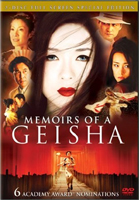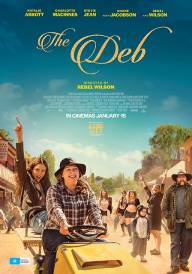Amy
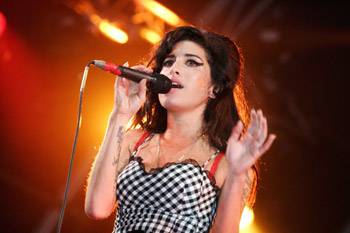
Amy
Cast: Amy Winehouse, Andrew Morris, Blake Fielder-Civil, Blake Wood, Chip Somers, Dale Davis, Darcus Beese, Dr. Cristina Romete, Guy Moot, Janis Winehouse, Juliette Ashby, Lauren Gilbert, Lucian Grainge, Mark Ronson, Mitchell Winehouse, Monte Lipman, Nick Gatfield, Nick Shymansky, Pete Doherty, Phil Meynell, Raye Cosbert, Salaam Remi, Sam Beste, Shomari Dilon, Tony Bennett, Tyler James, Yasiin Bey (Mos Def)
Director: Asif Kapadia
Genre: Music, Documentary
Rated: MA
Running Time: 128 minutes
Synopsis: From the award winning team behind acclaimed documentary Senna, comes this insightful and moving portrait of iconic singer/songwriter Amy Winehouse. A pop star with soul; Amy's rare musical ability made her a star, while her chaotic personal life stole headlines. With rare interviews and never-before-seen archival footage, AMY takes us behind the headlines to reveal a prodigiously talented young woman whose life ended far too soon. With this film, the world will fall in love with the real Amy Winehouse and her music all over again.
Amy
Release Date: July 2nd, 2015
About The Production
When filmmakers Asif Kapadia (director), James Gay-Rees (producer) and Chris King (editor) collaborated on the 2010 documentary Senna, which charted the story of acclaimed F1 driver Ayrton Senna, they earned a clutch of awards (including two BAFTAs) and a mass of critical plaudits. Such is the film's popularity, however, it still serves up fresh opportunities. Two years after Senna's theatrical release, James Gay-Rees was approached by David Joseph, the chairman and CEO of Universal Music UK, who asked whether the team would be interested in turning their talents to another story about a modern-day icon whose life had ended in tragic circumstances.
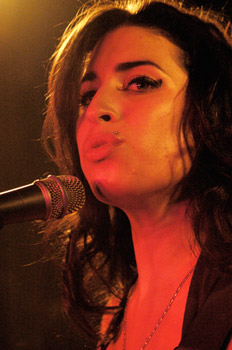 'David Joseph said, -Would you be interested in making a movie in the style of Senna which captures the musical genius of Amy Winehouse,'" James Gay-Rees recalls. 'And it took me about a nanosecond to go, -Yes! We're up for it. Absolutely.'"
'David Joseph said, -Would you be interested in making a movie in the style of Senna which captures the musical genius of Amy Winehouse,'" James Gay-Rees recalls. 'And it took me about a nanosecond to go, -Yes! We're up for it. Absolutely.'"
James Gay-Rees had not considered the Amy Winehouse story up until that point. 'But I knew instinctively that there was something interesting going on there," he says. 'I immediately called Asif Kapadia. We weren't actively looking for something to do together after Senna, but he said yes straight away."
Like Amy Winehouse, Asif Kapadia grew up in North London and though the majority of his films have been shot overseas, he was keen to focus his talents on his hometown. He had recently shot Odyssey, one of four films about London that were commissioned for the 2012 Olympics.
'When James Gay-Rees called me I was living in Turnpike Lane," he remembers. 'I had just been doing the film for the London Olympics and that really made me think about the city. I feel very much a Londoner and a North Londoner specifically. James Gay-Rees asked what I thought and while I wasn't a crazy Amy Winehouse fan, I had her records and knew that life with her was never boring.
'Something happened with Amy Winehouse," he adds, 'and I wanted to know how that happened in front of our eyes. How can someone die like that in this day and age? And it wasn't a shock; I almost knew it was going to happen. You could see she was going down a certain path."
He felt that her story should be explored in detail. 'For me, she was like a girl from down the road. I grew up in the same part of the world. It could be someone I knew, someone I was friends with or might have gone to school with. I thought we should investigate."
James Gay-Rees then approached film editor Chris King who was immediately excited by the story's potential. Chris King explains, 'I think that all of us knew the broad brush strokes. Amy Winehouse emerged and became hugely successful and then died, but we didn't know that much of the detail at this early stage."
Much of the filmmakers' approach would depend on what material was available. 'So the first task was for us to assimilate as much footage as we could and then to start interviewing people," Chris King continues. 'And by those dual processes we began to get a narrative idea."
Even before beginning the lengthy and fraught interviewing process, and the difficult task of obtaining new footage, the filmmakers settled on the idea of telling the story through Amy Winehouse's lyrics, which would appear on screen throughout the film.
'The early instinct was that the songs would be key," Asif Kapadia says. 'They'd be the spine of the film. We began looking at the lyrics and thinking that this might be like a version of a Bollywood film where the narrative is in the lyrics and in the songs. We thought we might build the narrative around those songs."
Amy Winehouse's lyrics were invariably very personal. Some have suggested that her song writing was a kind of catharsis or therapy, in which she worked through difficult emotions. 'It was as simple as that," adds the director. 'Once you understand her life and you read the lyrics, they run much deeper than you might have thought.
'I thought, -All we have to do is unravel what these lyrics are about.' That for me became the big revelation – her writing. Everyone knew she could sing, but maybe people didn't realise how well she could write. She wrote the music herself as well. The whole thing was her." After settling on Amy Winehouse's songs and lyrics as the narrative vehicle, coupled with the fact that the filmmakers would use as a backdrop the city in which they live, they then began to search for the right interview subjects. This would prove a very difficult process, not least because there is no definitive book that tells the Amy Winehouse story.
'It was a case of seeing who we might meet and talk to," says Asif Kapadia. 'With Senna there were a lot of books and a lot of people knew the story. With Amy Winehouse it became apparent that no one knew the story, or that people were not willing to tell it."
James Gay-Rees agrees. 'On Senna we had somebody on the team who knew how often Ayrton farted every day, but on this film we had no such person. We read a couple of key books, which are fairly inconsistent with each other. I am not saying they are not legitimate but there is a fair amount of conflicting information. She had a really complex social and family life." 'She had her old friends, her famous friends, her new friends and not so famous friends and she would present different versions of herself to all these different people," the producer adds, 'so they all had completely different reflections and experiences of her. And not all of them married with each other."
The filmmakers started their base research and secured the co-operation of the Amy Winehouse estate, which is controlled by the singer's father, Mitch Winehouse, and also the Amy Winehouse Foundation. They also secured the co-operation of Raye Cosbert, who managed Amy Winehouse for Metropolis Music.
At the beginning of the production, all the filmmakers knew for sure was that Winehouse was a highly complicated, fascinating, charismatic and very bright individual. 'But as the research period gathered momentum, the signs were more and more evident that she might struggle to last the course," says James Gay-Rees. 'She was so intense."
It was not long afterwards, however, that the filmmakers began running into problems. 'No one wanted to speak out, apart from the usual suspects," continues James Gay-Rees. 'Certainly, none of the people who were really close to her wanted to speak out."
In fact, Amy Winehouse's closest friends had taken a vow of silence. 'Right after her funeral," says James Gay-Rees, 'they said -Let's just keep it in-house and never share this with anybody.'" Asif Kapadia, who completed the 100 or so interviews that tell the Amy Winehouse narrative, notes that their journey through the filmmaking process was built upon winning people's trust. 'It became a journey that was different from Senna because I had to get so many different people to trust me," he says.
'It was all quite recent and painful for a lot of people and there was a lot of guilt and a lot of baggage."
The filmmakers spent almost a year trying to get a number of vital people to participate in the interview process. 'The key people who initially didn't want to be involved; Juliette (Ashby) and Lauren (Gilbert), her two oldest friends who were very close with Nick Shymansky, her first manager, eventually realised that they should participate so that their side of the story would be heard," explains James Gay-Rees.
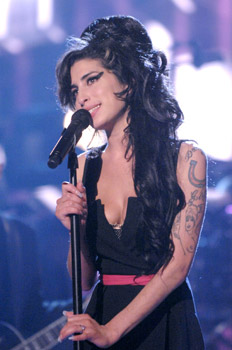 'The whole experience took an awful lot out of all these people, understandably. It is hard to imagine what it must be like to see your closest childhood or teenage friend going through the perils of celebrity and mega-fame, knowing that there were underlying issues that would come to the fore."
'The whole experience took an awful lot out of all these people, understandably. It is hard to imagine what it must be like to see your closest childhood or teenage friend going through the perils of celebrity and mega-fame, knowing that there were underlying issues that would come to the fore."
Juliette Ashby and Lauren Gilbert were Amy Winehouse's oldest and closest friends, even though their relationship had its ups and downs, especially during the later stages of the singer's life. 'But, importantly, these two can contextualise Amy Winehouse," says James Gay-Rees.
'She was just like them, a suburban girl from north London. She wasn't born for fame, necessarily; I don't think anyone is. Amy Winehouse was just a Jewish kid from North London who became this phenomenon and by having these two friends as a fairly constant presence in the movie reminds you of where she has come from. Amy Winehouse was not a Justin Bieber. She wasn't a Disney kid."
The Breakthroughs
One of the first major breakthroughs the filmmakers had was winning the support of Nick Shymansky, Amy Winehouse's first-ever manager. Not only did he have a deep understanding of, and love for, his former client, he also held a lot of footage that would prove integral to the finished film.
Indeed, Amy Winehouse editor Chris King says that Nick Shymansky was the filmmakers' first guide into the story. 'Nick Shymansky was key," he explains. 'We spoke to her friend Tyler James as well and both of them described this girl who was writing poetry and playing music for absolutely personal reasons. They both had different opinions as to why she did it but there was obviously a cathartic element for her, a way of salving some sort of pain."
'Writing was musical therapy for Amy Winehouse," continues Chris King. 'But also her writing was enormously witty and funny. There was a kind of healthiness in it; she had to do it. It was compulsive. She also wrote very funny and rude lyrics. Once we got all that, it became the first chunk of the film. It became solidified in our heads."
It then took a further nine months to bring Juliette Ashby and Lauren Gilbert on-board. 'They are just like Amy Winehouse," says Asif Kapadia. 'Nick Shymansky said that they'd be a challenge, just like Amy Winehouse was, but that they knew her better than anyone, and that became the next stage " getting their trust." 'People were very wary, very nervous and paranoid," he adds. 'Our having made Senna helped and when people watched it, even if they weren't interested in that subject, they could see how it worked."
When Asif Kapadia began talking to those closest to Amy Winehouse, it became clear that they were glad to free themselves of the burden that they carried. 'It was like therapy for them in some way," the director says.
'There were a number of people who were becoming unwell because they were carrying this burden about Amy, knowing what they knew. And I was impartial. I wasn't part of the music business, I had no agenda, and most of them felt better afterwards."
'That then became progressive to the next stage, where there were things they didn't want to talk about, but eventually felt as though they had to talk about. And then when 10 people have said the same thing you can see how it's all connected."
During the interview process, most of the subjects that were close to Amy Winehouse would break down. It was an emotionally harrowing experience for all involved. 'But because I wasn't filming them, that helped," says Asif Kapadia. 'You don't need to see that on a camera. The emotion is carried in the voice."
'That process made the trust a lot easier to build, whereas, if you're filming, people are guarded in a different way. We'd then play the edit of the interview back to them and ask them if it felt honest to what they wanted to say."
Chris King agrees that Amy Winehouse's childhood friends were incredibly wary of any involvement in the project. 'But eventually they came forward and we managed to get to people who were very close to Amy Winehouse and the Winehouse family, who had been there all the way through," he says. 'Then what had previously been conjecture suddenly became reality."
It was not just the interviews from Nick Shymansky, Lauren Gilbert and Juliette Ashby that proved key to the movie; it was also the footage they would provide. 'There's a lot of concert footage but not that much of Amy Winehouse in her prime, because her prime was a very short moment before she came famous," says Asif Kapadia.
'But Nick Shymansky's footage in particular showed us the girl that she really was. You could understand how intelligent, special and also how ordinary she was. I knew I could make a film from just that early footage."
The director says that the early footage gave the filmmakers a strong visual theme. 'There's a lot of stuff where she looks straight down the lens, straight at the audience," he says. 'I found that very powerful. It starts off being very friendly, and she films herself a lot, literally talking to herself on camera."
'Then you also have these personal photos, where she's photographed herself on her computer in Photo Booth. I remember thinking that was quite a powerful visual journey " the use of the lens and the camera. It then becomes something very aggressive with the paparazzi."
'Her looking at us down the lens I realised would be very powerful and that came out of her friends filming her and her husband (Blake Fielder-Civil, another key contributor) filming her. When they were in that rehab facility and Blake Fielder-Civil says, -Go on, sing Rehab!' That is quite hard to watch but the fact that she's looking at us adds to the layers."
James Gay-Rees agrees. 'I think that the early footage was key," he says, 'because that shows another side of her from what was presented in the press. Just seeing that side of her character shining through gave us something to go with."
Like James Gay-Rees and Asif Kapadia, editor Chris King believes that this early footage was imperative. He cites the shots provided by her childhood friends from 2005 that show Amy Winehouse giving a guided tour of her holiday apartment.
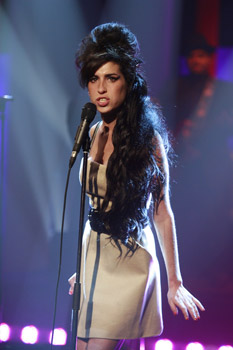 'She was being so funny and alive and happy and she was really in love when she was on that holiday," he says. 'Her life was great. That is brilliantly funny. The tour of her flat is great, great stuff."
'She was being so funny and alive and happy and she was really in love when she was on that holiday," he says. 'Her life was great. That is brilliantly funny. The tour of her flat is great, great stuff."
None of this early footage had ever been seen before. 'And it was great to get hold of material that showed Amy Winehouse on her wedding day, for example," adds Chris King.
Her friend Phil Meynell, another interviewee, supplied this footage. 'And nobody has seen it before. It is amazing," says James Gay-Rees. 'It is the intimate stuff; it's just her kicking back when she is at the peak of her powers. I love the stuff we see of her on the boat on her wedding day."
The Editing Process
On a film like Amy Winehouse the production schedule involved intensive research, the compiling of the audio interviews and the footage, and then the very lengthy edit, which ran alongside. The edit itself was a 20-month process and James Gay-Rees says that the film benefitted enormously from having Chris King on board from the outset.
'There are not many people in the world who are better at straight archive docs than Chris King," he says. 'He has a brilliant nose for using archive footage."
As with Senna, there would be no interviewees shown on screen. The audio would play over the existing footage. 'And that is incredibly labour intensive," the producer notes. 'We have no talking heads and no voice over, so we have got no shorts cuts. We just had to make the images work."
Unlike Senna, where the filmmakers had an enormous F1 archive from which they could draw material, on Amy Winehouse there were many limitations. 'There are still photographs in there, which we didn't have in Senna. In certain places there wasn't any footage at all."
The coverage that the filmmakers could use on Amy Winehouse was also completely different from Senna. 'All the material was different this time as well," says Chris King. 'We were reliant on things that many different people had shot. Also, we found ourselves early on with holes during key periods."
He remembers 2005, where a great deal happened in Amy Winehouse's life but where she was out of the publicity cycle and was therefore rarely on camera.
'She wasn't that well known and so for a while 2005 was simply a question mark," Chris King adds. 'It was a case of, -What happened and how can we tell that part of the story?' That was the year when she was in between records and she probably got lost a little bit."
She became immersed in the Camden scene and was dabbling with drugs. 'She started an intense relationship and she wasn't writing. We knew there wasn't much evidence of her actually writing tunes, she wasn't performing, and yet this massive thing happened."
The intense relationship that began during this period saw her fall head over heels in love with Blake Fielder-Civil. 'What was all this about?" asks Chris King. 'We did not understand it because there was no record of what was happening."
'From the outside, he looks like the wrong bloke for any girl to get involved with. All this happened off camera. How could we get that across? And then drip by drip, bits and pieces of interviews and then little bits of footage and stills came in and we were able to fill in holes and begin to work out how to get that part of the narrative across."
Even during periods when the coverage was strong, the quality was often very weak. 'The material was so scrappy a lot of the time," the editor says. 'Very seldom was there anything where you would go, -Well, that's a good shot.'"
'Yet there were plenty of that on Senna. A lot of stuff was impressively shot on that film, or there was great coverage or some useful old film stock. There were many aesthetic things that were quite pleasurable to look at. But in Amy Winehouse there wasn't very much of that at all. The most interesting stuff was the roughest. That stuff was the most revealing."
Asif Kapadia concurs. 'With Senna we had an amazing amount of footage with really brilliant camera people, while on Amy you've got ordinary people filming in a car or on the street, so technically it's never going to be as good. But you have to learn to trust that it's real. You have to trust the quality of the material and the emotional truth over the technical quality."
'Some of it looks awful," he adds, 'and you worry whether you can't use it but you have to. Plus, we can make it look better and sound better. Also, people do get immersed in it."
On a cinema screen, viewers are likely to forgive the quality more than if they were watching on a monitor, says Asif Kapadia. 'And having done a few footage-based films, I would take a wobbly shot of something that only exists in that format over a beautifully composed shot that doesn't have the same meaning. You have to learn to free yourself up to imperfection. In fact, the imperfection is something that I find interesting."
That said, an enormous amount of effort was spent working on the footage and the sound quality to ensure that everything used in the film would play as effectively as possible on screen.
Chris King explains, 'A lot of the job was me and Asif Kapadia sitting in a room wondering where we should go next. But I was also working with people at the other end of that process who have to take what we have spent a year-and-a-half putting together and then remake that at high resolution, so that it can be projected on to a screen in cinemas."
'And those people were just amazed by the sheer amount of craft and impeccable work that had gone into what looked like a fairly messy time line. With every shot, we had to do a lot of stabilisation and reframing and colour correction. We had to slow shots down and speed shots up and reformat things that were shot in a different format."
'The online editor who took the job on said it was by far the most technically complicated film he had ever worked on," adds Chris King. 'Even though it looks like a messy honest home video at times, it was an absolute labour of love to turn this very, very disparate collection of scrappy bits and pieces into something that flowed and felt like a piece of cinema."
And then there was all the work done on the sound quality as well. 'There was a lot of care and attention paid to how we unify all this stuff, which was shot over 10 years on people's mobile phones, amateur stuff, professional stuff, stuff from America and from all over the world," Chris King says.
'There was a lot of intricate work that went in to trying to make that feel as if it were a unified piece of filmmaking. That side is probably not something that people are aware of when they watch it."
'Hopefully, as usual, the editing side is disguised and viewers will be caught up and be swept away with Amy Winehouse's music and the narrative and the story. But it was very hard work."
The filmmakers concede that some powerful material, and some especially shocking moments, had to be exorcised in a bid to keep the narrative balanced, and to maintain a manageable running time.
'There was quite a lot that we could not put in because it would make the film too long," says James Gay-Rees. 'We really, really, really tried to get it down to a more traditional length, 90 minutes, but it was just one of those narratives."
'There were definitely other things that we would have liked to pursue but we were all prepared to sacrifice things to keep it to around the two-hour mark."
The filmmakers were also keen to ensure that the film was not too harrowing for the viewer. 'I think is it dark enough," the producer concludes. 'You have to be careful about that tipping point whereby it becomes self-defeating and actually people can't enjoy the film."
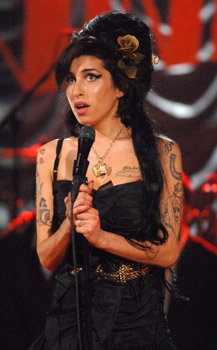 'We definitely had earlier versions of the movie where we were showing what a lovely, bright creature she was, but then you went into an hour-and-a-half of hardcore misery. Then it becomes like a trial. People could have justifiably said, -What is the point of this?' So we had to be very careful in finding that balance."
'We definitely had earlier versions of the movie where we were showing what a lovely, bright creature she was, but then you went into an hour-and-a-half of hardcore misery. Then it becomes like a trial. People could have justifiably said, -What is the point of this?' So we had to be very careful in finding that balance."
The Amy Winehouse Story
According to the filmmakers, the worst thing that audiences could say is that they had seen this story before in the media. They're confident, however, that this will not be case. It is not just the quality of interviews and the footage that sets Amy Winehouse apart from the existing coverage, it is the way the film broaches the Amy Winehouse narrative.
'We were very keen not to just rehash the awfulness that had been shown before," says James Gay-Rees, 'because there was a lot of that going on in the media at the time, and what would be the point of recycling that? We had to dig deeper – what were we trying to say?"
Asif Kapadia feels that he got to the core of her story. 'This is a film about Amy Winehouse and her writing," he says. 'People didn't realise how important her lyrics were and how personal they were." 'Just putting her lyrics on the screen lets people know that they might have danced to that song and maybe didn't realise how personal the content really was."
Ultimately, the filmmakers believe that Amy is a film about love. 'It is about a person who wants to be loved," says Asif Kapadia, 'someone who needs love and doesn't always receive it."
Amy
Release Date: July 2nd, 2015
Have You Seen This?
MORE



